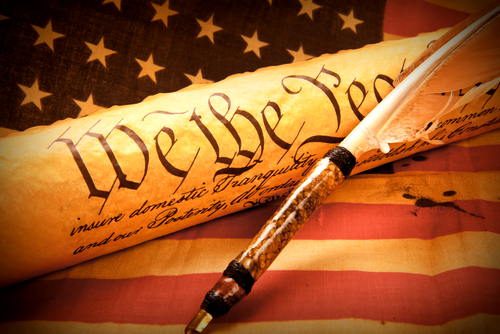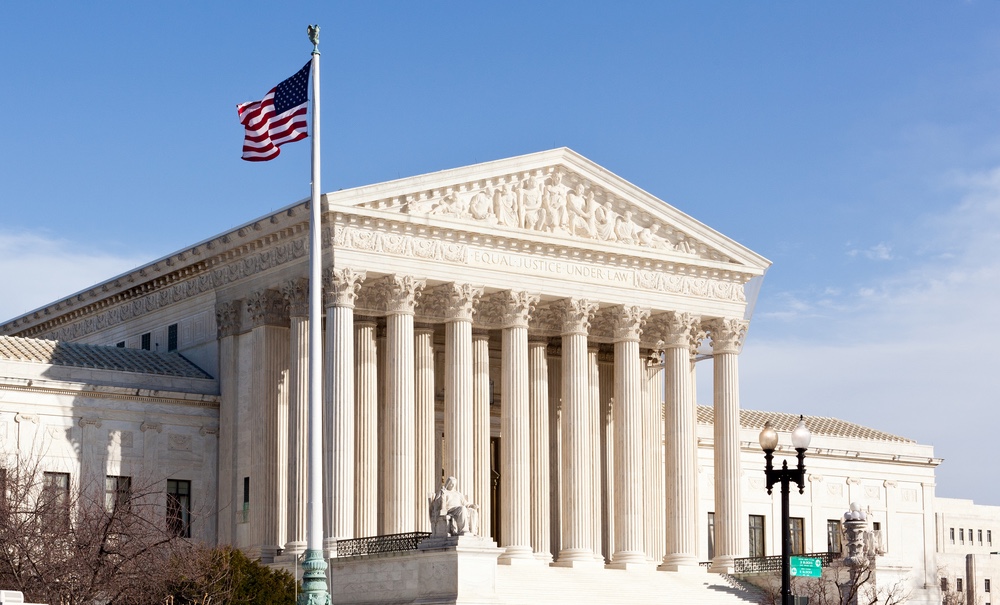what amendment gives the right to bear arms
The 2nd Amendment & the Right to Bear Arms
History of the Second Amendment
The 2d Subpoena provides U.S. citizens the right to bear arms. Ratified in Dec 1791, the amendment says:
A well regulated Militia, being necessary to the security of a free State, the right of the people to proceed and bear Arms, shall not be infringed.
James Madison originally proposed the 2d Amendment before long later on the Constitution was officially ratified every bit a style to provide more power to land militias, which today are considered the National Guard. It was deemed a compromise between Federalists — those who supported the Constitution as information technology was ratified — and the anti-Federalists — those who supported states having more ability. Having just used guns and other arms to ward off the English, the amendment was originally created to requite citizens the opportunity to fight back against a tyrannical federal regime.

Interpretations of the Second Amendment
Since its ratification, Americans accept been arguing over the subpoena'south meaning and interpretation. 1 side interprets the amendment to mean it provides for commonage rights, while the opposing view is that it provides individual rights.
Those who take the collective side think the subpoena gives each state the correct to maintain and train formal militia units that can provide protection against an oppressive federal government. They argue the "well regulated militia" clause conspicuously ways the right to bear arms should just exist given to these organized groups. They believe this allows for only those in the official militia to behave guns legally, and say the federal government cannot abolish land militias.
Those with the contrary viewpoint believe the amendment gives every citizen the correct to ain guns, free of federal regulations, to protect themselves in the face of danger. The individualists believe the amendment'due south militia clause was never meant to restrict each citizen'due south rights to bear arms.
Both interpretations take helped shape the country's ongoing gun control contend. Those supporting an private'due south right to ain a gun, such every bit the National Burglarize Association, argue that the Second Amendment should give all citizens, not just members of a militia, the right to own a gun. Those supporting stricter gun control, similar the Brady Campaign, believe the 2nd Amendment isn't a blank check for anyone to own a gun. They feel that restrictions on firearms, such as who tin can take them, nether what conditions, where they can be taken, and what types of firearms are available, are necessary.
The Supreme Court and the 2nd Amendment
While the right to carry arms is regularly debated in the courtroom of public opinion, it is the Supreme Courtroom whose opinion matters nigh. Yet despite an ongoing public battle over gun ownership rights, until recent years the Supreme Court had said very picayune on the outcome.

One of the first rulings came in 1876 in U.S. v. Cruikshank. The case involved members of the Ku Klux Klan not assuasive blackness citizens the right to standard freedoms, such as the right to associates and the right to bear arms. Every bit role of the ruling, the court said the right of each individual to bear arms was not granted under the Constitution. Ten years afterward, the court affirmed the ruling in Presser v. Illinois when it said that the Second Amendment only limited the federal regime from prohibiting gun buying, not the states.
The Supreme Court took up the issue again in 1894 in Miller five. Texas. In this case, Dallas' Franklin Miller sued the state of Texas, arguing that despite land laws proverb otherwise, he should accept been able to carry a concealed weapon under Second Subpoena protection. The courtroom disagreed, saying the Second Amendment does non apply to country laws, like Texas' restrictions on carrying dangerous weapons.
All three of the cases heard before 1900 cemented the courtroom's stance that the Nib of Rights, and specifically the Second Subpoena, does not prohibit states from setting their ain rules on gun ownership.
Until recently, the Supreme Courtroom hadn't ruled on the Second Amendment since U.S. v. Miller in 1939. In that case, Jack Miller and Frank Layton were arrested for conveying an unregistered sawed-off shotgun beyond country lines, which had been prohibited since the National Firearms Deed was enacted five years earlier. Miller argued that the National Firearms Act violated their rights under the Second Amendment. The Supreme Courtroom disagreed, yet, saying "in the absenteeism of whatsoever evidence tending to show that possession or employ of a 'shotgun having a barrel of less than eighteen inches in length' at this time has some reasonable relationship to the preservation or efficiency of a well regulated militia, we cannot say that the Second Amendment guarantees the right to keep and bear such an instrument."
It would be about 70 years before the court took up the issue once more, this time in the District of Columbia v. Heller in 2008. The case centered on Dick Heller, a licensed special police function in Washington, D.C., who challenged the nation's majuscule's handgun ban. For the first time, the Supreme Courtroom ruled that despite state laws, individuals who were not part of a country militia did have the correct to behave artillery. As role of its ruling, the court wrote, "The Second Subpoena protects an individual right to possess a firearm unconnected with service in a militia, and to apply that arm for traditionally lawful purposes, such as self-defense inside the home."
The courtroom would dominion on the effect again two years after as office of McDonald v. City of Chicago, which challenged the city's ban on individual handgun buying. In a similar 5-to-four ruling, the court affirmed its conclusion in the Heller example, proverb the Second Amendment "applies as to the federal government and united states of america."
In 2016, the Supreme Court again ruled on a correct-to-comport-arms case, Caetano v. Massachusetts. The instance involved a adult female who was in possession of a stun gun for self-defence force against an abusive ex-boyfriend. Considering stun guns were illegal under Massachusetts law, the woman was arrested and convicted for possessing the weapon. The case fabricated its way to the Supreme Court, which ruled that stun guns and, indeed "all instruments that constitute bearable arms," are protected under the Second Amendment.
In 2017, the Supreme Courtroom declined to hear Peruta 5. California, a gun-rights instance centering around concealed carry, or the right to carry a curtained handgun in public. California requires that applicants for a concealed carry license show "good cause," such as a specific threat to a person's safety. A Vietnam veteran named Edward Peruta challenged this requirement as a cutback of his Second Amendment rights. While Heller was a case near keeping firearms in the home for self-protection, Peruta v. California was nigh whether that right extends to the public sphere. Justice Clarence Thomas and new justice Neil Gorsuch dissented from the refusal to review the example, indicating that the Supreme Court's newest justice may be particularly bourgeois on gun rights.
Meanwhile, the boxing over gun rights continues at the state level. A 2016 working newspaper from Harvard Business concern School researchers found that a mass shooting leads to a 15 percent increment in the number of firearm-related bills introduced into the country legislature that twelvemonth. The more fatalities, the larger the increase in firearm bills. But the bills aren't ever what you might expect: When Republicans agree power in the land legislature after a mass shooting, the number of laws enacted to loosen gun restrictions goes up 75 percent. Democrat-controlled legislatures, on the other paw, did not enact a college rate of regulation-tightening laws immediately subsequently mass shootings than before.
"This is consistent with survey testify suggesting that even when a majority supports a gun-control proposal, those opposed to increased gun control are more likely to have actions like writing a letter or donating coin to support their side," the researchers wrote.
Despite the recent rulings, the debate on gun control continues. Incidents like those in Aurora, CO and Sandy Hook in Newtown, CT only serve equally motivation for both sides to have their opinions heard and considered.
Related:
- Obama Gun Proposals Praised by Scientists
- How the Regime Stifled Gun Inquiry
- What is an Assault Weapon?
- What is Freedom?
Editor'southward Note: This reference commodity was showtime published on Jan. 22, 2013. It was updated with new cases and information on June 26, 2017.
Source: https://www.livescience.com/26485-second-amendment.html
0 Response to "what amendment gives the right to bear arms"
Post a Comment